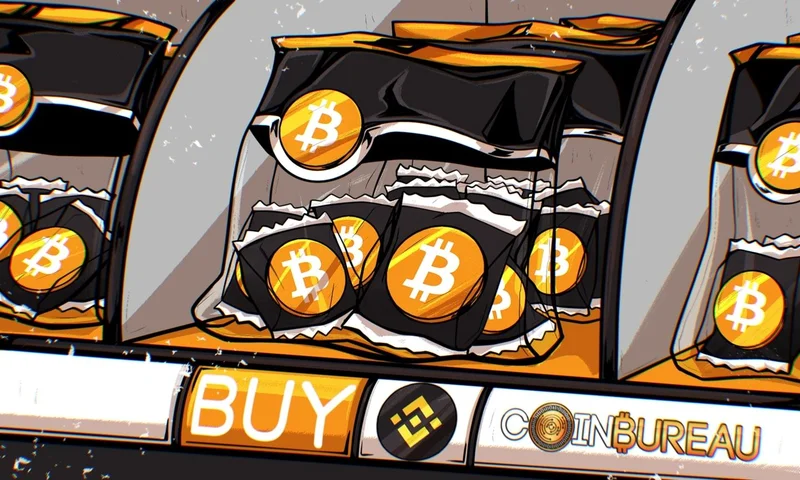It was the kind of digital silence that’s louder than any alarm. For millions of traders on October 10th, 2025, the world’s financial engine seemed to seize. Dashboards on the colossal `crypto exchange Binance` froze mid-refresh. Stop-loss orders vanished into the ether. As a geopolitical tremor sent a $20 billion liquidation wave crashing through the market, the central hubs of the crypto universe simply went dark.
For a moment, it felt like a catastrophic failure of the entire crypto experiment. But it wasn't. What we witnessed that weekend wasn't an ending, but a profound and necessary beginning. It was the most brutal, real-world stress test imaginable, one that pitted two fundamentally different philosophies against each other. And when I saw the data from decentralized protocols like Uniswap and Aave side-by-side with the reports from Binance, I honestly just sat back in my chair, speechless. This wasn't just a market event; it was a paradigm shift revealing itself in real-time.
This is the kind of breakthrough that reminds me why I got into this field in the first place. We're not just building faster databases or slicker apps; we're architecting new systems of trust. And that chaotic weekend in October gave us the clearest sign yet of which architecture is truly built for the future.
The Day the Power Grid Flickered
Let's be clear: what happened at Binance wasn't born from malice, but from the inherent fragility of centralization. Think of a centralized exchange as a city’s single, massive power plant. It’s incredibly efficient, powerful, and serves millions with ease. But when an unprecedented energy surge hits—like the panic selling sparked by Trump’s tariff announcement—the entire grid is at risk. Breakers trip, transformers blow, and the whole city can plunge into darkness.
That’s what we saw. As 1.6 million traders rushed for the exits, the system buckled under a load it was never designed to handle. The fallout was real and painful. People lost fortunes not just because the market moved, but because the tools they trusted to protect them simply failed at the critical moment.

To their credit, Binance’s leadership, from co-founder Yi He to CEO Richard Teng, stepped up. They apologized without excuses and promised to compensate users for losses directly attributable to their system’s technical failures. It was the right thing to do, a responsible move from a legacy player. But it also highlights the core principle of the old world: when the system breaks, you need a central authority to step in and fix it. You are reliant on their goodwill, their resources, and their judgment. But what if there was a system that didn't need fixing because it was designed not to break in the first place?
The Silent, Unbreakable Network
While the centralized world was in damage control, something extraordinary was happening in the quiet corners of decentralized finance. These are DeFi protocols—in simpler terms, they're financial systems run by immutable code on a blockchain, not by a single company with servers that can get overwhelmed. They are the financial equivalent of a distributed solar network, with panels spread across every rooftop. Even if a storm cloud covers one part of the city, the rest of the network keeps humming along, sharing power seamlessly.
The numbers from that weekend are staggering. Uniswap, a decentralized exchange, didn't just survive; it processed a record-breaking $10 billion in volume without a single second of downtime. The lending protocol Aave handled a massive $180 million in liquidations in one hour—a terrifying amount of pressure—and it executed flawlessly. As Euler co-founder Michael Bentley perfectly put it, “That stress test was wild, but DeFi worked flawlessly.”
This is the moment that changes everything. The sheer, unadulterated proof that a trustless system can withstand a level of market panic that brought its centralized counterparts to their knees is a historical turning point—it means the gap between the financial world we have and the one we can build is closing faster than we can even comprehend. We just saw code, pure and simple, outperform a massive corporate infrastructure under the most extreme pressure imaginable. What does that tell us about where we should be placing our bets for the next decade? Is this the moment the world finally wakes up to the fact that decentralization isn't a niche hobby, but a fundamental upgrade in resilience?
So what does this mean for you, the person who simply wants to `how to buy bitcoin`? It means the landscape has changed. For now, massive, `high liquidity crypto exchanges` like Binance remain the primary on-ramps. They are the accessible highways into this new world, and learning to navigate them is still essential. How to Buy Bitcoin on Binance Amid Volatility and Regulatory Scrutiny: you create an account, complete verification, and connect a funding source. But the lesson of October 2025 is that the highway isn't the only road. The crash exposed the need for vigilance and diversification. Understanding how to interact with both the centralized and decentralized worlds is no longer an advanced skill; it's becoming a fundamental part of responsible digital ownership.
The Future Isn't Just Coming, It's Proving Itself
The great crypto crash of 2025 wasn’t an indictment of digital assets. It was a graduation ceremony for decentralized finance. For years, we’ve talked about the promise of trustless, resilient, code-driven systems. On that chaotic weekend, under pressures that would have shattered traditional institutions, DeFi moved from theory to undeniable proof. The future of finance won't be a battle between CeFi and DeFi, but a long, fascinating process of integration. But for the first time, we have indisputable evidence of which architecture is truly built to withstand the storms, and which one will always require a human hand to pick up the pieces.
